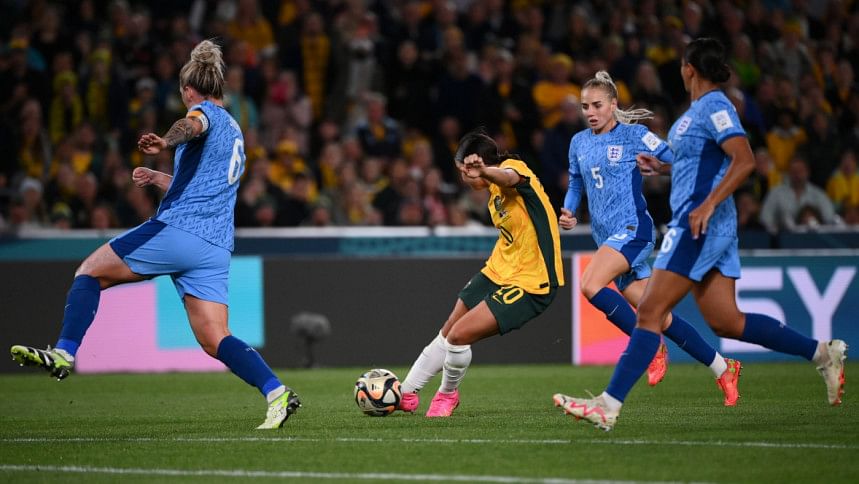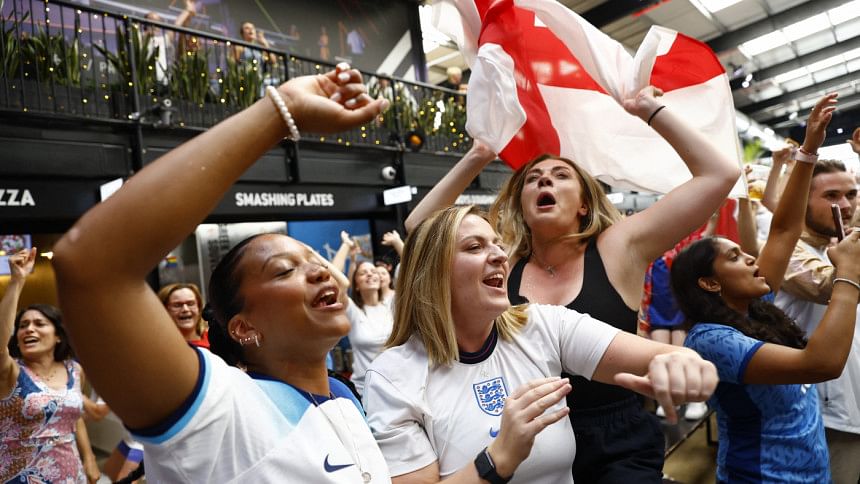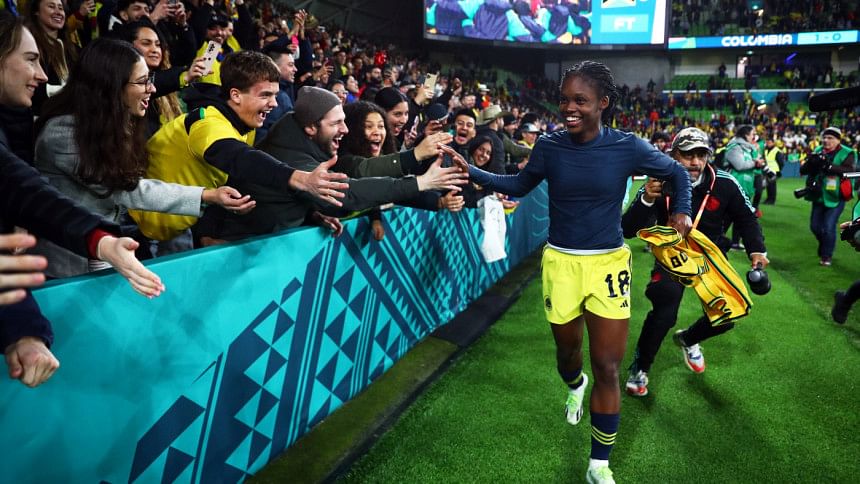Of ‘colossal change’ and setting a standard

The FIFA Women's World Cup 2023 tomorrow will see a new champion crowned, either Spain or England, with all the tournament's previous winners eliminated following the quarterfinals.
Four-time victors USA saw their hopes of a third successive triumph end in the round of 16 following a dramatic penalty shootout defeat by Sweden.
Germany crashed out in the group stage, Norway were eliminated in the last of 16 by Japan who then saw their own dreams dashed by the Swedes in the quarters.

The exhilarating football showcased throughout the tournament, co-hosted for the first time, was thoroughly complemented by viewership.
FIFA expects viewing figures of some two billion this time, making the tournament in Australia and New Zealand the most popular standalone women's sporting events ever held, despite time zone differences that made it difficult for many Europeans and Americans to tune in.

With Australia already a well-established nation of sports enthusiasts across a diverse genre of sports, the Women's World Cup gave football a huge boost in co-hosts New Zealand as new attendance records were set: the first one broken on the opening day of the tournament when 42,137 saw New Zealand beat Norway in Auckland.
It was surpassed when Spain's last 16 win over Switzerland and Sweden's quarterfinal victory over Japan both drew capacity crowds of 43,217 to Eden Park, a figure matched at Tuesday's semifinal between Spain and Sweden.

"This tournament has seen a colossal change in the way football, and particularly women's football, is seen in New Zealand," said Andrew Pragnell, chief executive of New Zealand Football.
Spain midfielder Aitana Bonmati is no stranger to playing in front of large audiences. But she considers "it will be crazy" playing a World Cup final in front of an expected 75,000 at Stadium Australia in Sydney.
"Some of us are very lucky. We've won two Champions Leagues with Barcelona. We've played at Camp Nou many times. We have the record crowd -- 90,000 people came to see us play," said Bonmati following the win against Sweden.

"But playing a World Cup final in front of 75,000, it will be crazy. I can't believe it's going to happen. Am I in a dream?
"This tournament has been amazing for women's football. The standard of football, the great games, the atmospheres."
As the final draws ever closer, it is worth looking back at the turmoil Bonmati and teammates had gone through prior to the marquee event.

Ten months ago, Spain were rocked by a player revolt in the wake of a disappointing quarterfinal exit at Euro 2022, with 15 players threatening to quit if the long-serving coach Jorge Vilda was not moved on.
The federation backed the coach, though, and the uprising was crushed as Vilda froze the mutineers out of his squad. However, three of the 15 dissidents, including Bonmati, were welcomed back to the fold.

Interestingly, Spain was initially slow to embrace the women's game, only qualifying for their first Women's World Cup in 2015. It all goes to show how a rich football culture and infrastructure can help work wonders in such a short span.
European champions England, meanwhile, will be desperate to bring a World Cup trophy home, 57 years after their male compatriots pulled the feat in 1966.

It is quite fitting that the World Cup final will feature a woman coach on the touchline. Sarina Wiegman, arguably England's biggest star, is one of the 12 female coaches in the first-ever 32-team Women's World Cup.
That's 37.5 percent, exactly the same as at the World Cup in 2019, when nine of the 24 teams in France had a woman at the helm.
Although the gender inequality in this case is reflective of the lack of women coaches at every level of the sport, there are other areas where the disparity has greater room to dissolve: prize money, for instance.
The 2023 tournament's total prize pot is 110 million US dollars, which was three times that of France 2019 edition but pales in comparison to the men's game when 440m US dollars was allocated for the World Cup in Qatar last year. However, bridging the gap is well on the cards if popularity of women's football keeps skyrocketing.
FIFA president Gianni Infantino, during the FIFA congress in March, stated that the governing body's ambition was to have equality in payments for the 2026 men's and 2027 Women's World Cup. "This is the objective that we set to ourselves," he said. "FIFA is stepping up with actions, not just with words."
With ever-increasing interests in women's football, it thus came as little surprise that two major global marketers, such as Nike and Adidas, moved fast to adapt to shoppers' quick shifts in preferences and demand in response to the unpredictability of the Women's World Cup, with the U.S. knocked out early and a first-time champion assured.
Adidas, for example, had doubled its production of Germany women's team jerseys for this World Cup, compared to the 2019 tournament, and was still on the verge of selling out when the team fell out of the running early. "That tells you something about the exponential growth of the sport," said Adidas spokesman Jan Runau.
On more positives, this Women's World Cup has seen several players juggling motherhood while competing in the game's global showpiece. USA star Julie Ertz, Tamires of Brazil and Spain's Irene Paredes, Jamaica's Cheyna Matthew and Konya Plummer have notably been involved in dual roles.
Defender Paredes, travelling with her one-year-old son, acknowledged the "huge effort" from the Spanish Federation made "to bring families closer". Zhang Xin, of China PR, spoke about the importance of setting an inspirational example for their children: "My experience will be an inspiring story for [my son] in the future. He will know that his mother made something of herself."
Regardless of whoever becomes champions or the level of entertainment the final has in store, the stories in Australia and New Zealand so far have been inspiring, indeed. Especially for the likes of Bangladesh and other developing women's football sides, who seek to play at the biggest stage one day, the 2023 World Cup is bound to motivate them in great orders of magnitude.

 For all latest news, follow The Daily Star's Google News channel.
For all latest news, follow The Daily Star's Google News channel. 








Comments